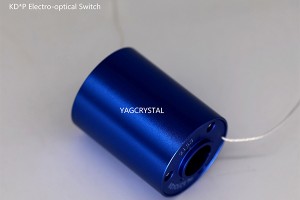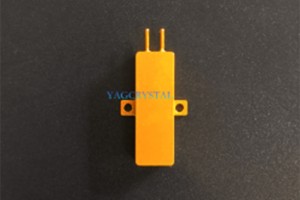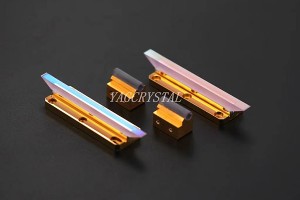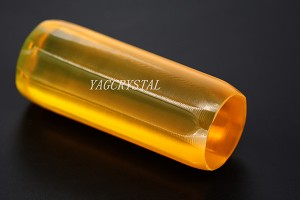KD*P Used For Doubling, Tripling And Quadrupling Of Nd:YAG Laser
Product Description
The most popular commercial NLO material is potassium dihydrogen phosphate (KDP), which has relatively low NLO coefficients but strong UV transmission, a high damage threshold, and high birefringence. It is often used to multiply a Nd:YAG laser by two, three, or four (at constant temperature). KDP is also commonly employed in E-O modulators, Q-switches, and other devices due to its superior optical homogeneity and high E-O coefficients.
For the aforementioned applications, our business offers bulk supplies of high-quality KDP crystals in a range of sizes, as well as tailored crystal selection, design, and processing services.
KDP series Pockels cells are employed often in laser systems with large diameter, high power, and small pulse width due to their superior physical and optical characteristics. One of the best E-O Q-switches, they are utilized in OEM laser systems, medical and cosmetic lasers, versatile R&D laser platforms, and military and aerospace laser systems.
Main Features & Typical Applications
● High optical damage threshold and high birefringence
● Good UV transmission
● Electro-optical modulator and Q switches
● Second, third, and fourth harmonic generation, frequency doubling of Nd:YAG laser
● High power laser frequency conversion material
Basic Properties
| Basic Properties | KDP | KD*P |
| Chemical Formula | KH2PO4 | KD2PO4 |
| Transparency Range | 200-1500nm | 200-1600nm |
| Nonlinear Coefficients | d36=0.44pm/V | d36=0.40pm/V |
| Refractive Index(at 1064nm) | no=1.4938, ne=1.4599 | no=1.4948, ne=1.4554 |
| Absorptance | 0.07/cm | 0.006/cm |
| Optical DamageThreshold | >5 GW/cm2 | >3 GW/cm2 |
| Extinction Ratio | 30dB | |
| Sellmeier Equations of KDP(λ in um) | ||
| no2 = 2.259276 + 0.01008956/(λ2 - 0.012942625) +13.005522λ2/(λ2 - 400) ne2 = 2.132668 + 0.008637494/(λ2 - 0.012281043) + 3.2279924λ2/(λ2 - 400) |
||
| Sellmeier Equations of K*DP( λ in um) | ||
| no2 = 1.9575544 + 0.2901391/(λ2 - 0.0281399) - 0.02824391λ2+0.004977826λ4 ne2 = 1.5005779 + 0.6276034/(λ2 - 0.0131558) - 0.01054063λ2 +0.002243821λ4 |
||









